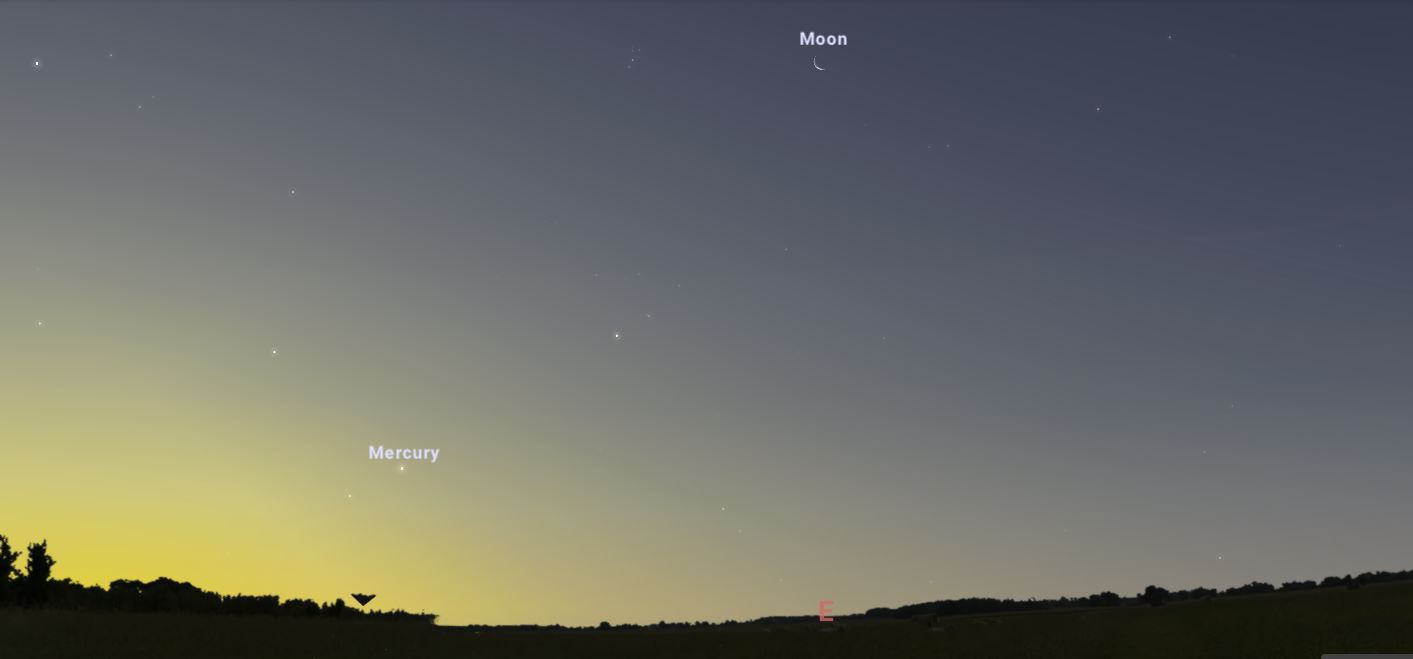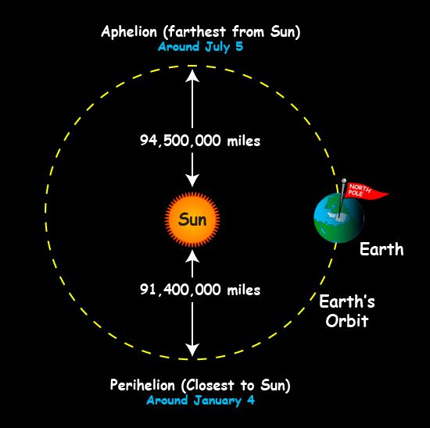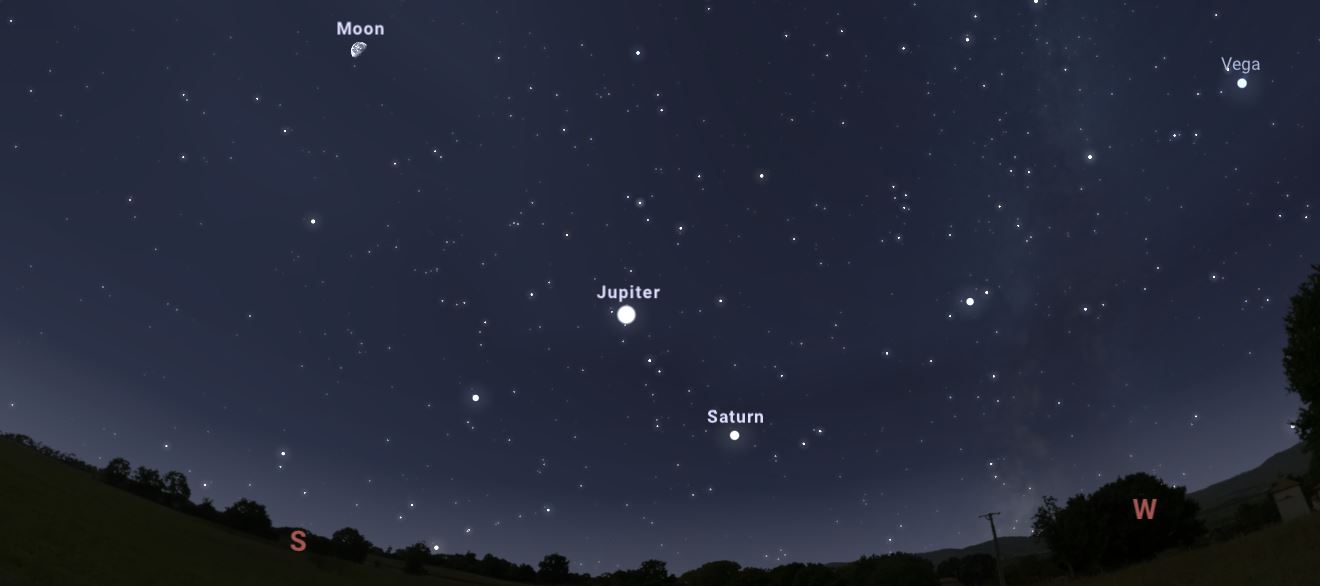What to look for in the Night Sky in July: NASA Launches and a Meteor Shower
Special Stories
16 Jun 2021 4:00 AM
While many skywatchers are anxiously awaiting the Perseid meteor shower in August, there are still several events in July that are worth craning your neck toward the night sky!
The Earth will be at its farthest point away from the sun in its annual orbit this month (see aphelion: July 5th), we'll be treated to a decent meteor shower, and NASA has one launch planned... but there could be more!
Spotting the International Space Station is always a great activity and is easy to do thanks to this handy tool. For even more events to look for in the night sky, check out the “tonight” feature on the EarthSky website.
 Image created with Stellarium
No, Mercury isn't getting any longer. Elongation is the distance between the sun and the planet, from the reference point of Earth. So, for the astronomy buffs, this is typically when some of the "more difficult to see" planets can be found more easily.
Mercury will reach such a point on July 4th. If you want to spot this tiny innermost planet, you'll want to be up a bit before dawn and look toward the east, and just a bit north. You should be able to spot the planet low on the horizon before the sun comes up. If you're having a difficult time, try binoculars or getting farther away from light pollution. The moon can be a good reference point as well. Look to the north (left when facing east) of the moon, near the horizon.
Image created with Stellarium
No, Mercury isn't getting any longer. Elongation is the distance between the sun and the planet, from the reference point of Earth. So, for the astronomy buffs, this is typically when some of the "more difficult to see" planets can be found more easily.
Mercury will reach such a point on July 4th. If you want to spot this tiny innermost planet, you'll want to be up a bit before dawn and look toward the east, and just a bit north. You should be able to spot the planet low on the horizon before the sun comes up. If you're having a difficult time, try binoculars or getting farther away from light pollution. The moon can be a good reference point as well. Look to the north (left when facing east) of the moon, near the horizon.
 Have you ever heard that the Earth's orbit isn't a perfect circle? It's actually slightly elliptical, which means the earth moves a bit farther or closer to the sun depending on the time of year.
This elliptical orbit doesn't determine the seasons, however. The tilt of the Earth on its rotational axis is responsible for that.
Aphelion, or the point in Earth's orbit when it's farthest away from the sun, will occur on July 5th this year. This means the solar radiation we receive during the Northern Hemisphere's summer is slightly less energetic than the rays we receive in the winter. After July 5th, the Earth slowly gets closer to the sun until Perihelion in early January.
Have you ever heard that the Earth's orbit isn't a perfect circle? It's actually slightly elliptical, which means the earth moves a bit farther or closer to the sun depending on the time of year.
This elliptical orbit doesn't determine the seasons, however. The tilt of the Earth on its rotational axis is responsible for that.
Aphelion, or the point in Earth's orbit when it's farthest away from the sun, will occur on July 5th this year. This means the solar radiation we receive during the Northern Hemisphere's summer is slightly less energetic than the rays we receive in the winter. After July 5th, the Earth slowly gets closer to the sun until Perihelion in early January.
 Delta Aquarids appear to radiate from Aquarius, which will be in the Southwestern Sky in the Northern Hemisphere. Jupiter will be right in the middle in late July. Image made using Stellarium.
Finally, a decent meteor shower! But wait — isn't the moon full for four nights before? Yes, the moon is going to wash out a lot of the Delta Aquarids, but it will still be worth a watch, especially if you're already out camping under the stars.
Since the moon will be waning after the 24th, it will be rising later and later in the evening. This should leave a few hours of decent darkness after twilight to try to see a few extra meteors before the moon starts to wash out all but the brightest burning specs of dust and rock.
The shower typically produces about 20 meteors per hour under the best conditions (away from city lights after midnight), but you'll likely see considerably fewer this year.
Try to sit in a comfortable position and take in as much of the sky as possible.
Delta Aquarids appear to radiate from Aquarius, which will be in the Southwestern Sky in the Northern Hemisphere. Jupiter will be right in the middle in late July. Image made using Stellarium.
Finally, a decent meteor shower! But wait — isn't the moon full for four nights before? Yes, the moon is going to wash out a lot of the Delta Aquarids, but it will still be worth a watch, especially if you're already out camping under the stars.
Since the moon will be waning after the 24th, it will be rising later and later in the evening. This should leave a few hours of decent darkness after twilight to try to see a few extra meteors before the moon starts to wash out all but the brightest burning specs of dust and rock.
The shower typically produces about 20 meteors per hour under the best conditions (away from city lights after midnight), but you'll likely see considerably fewer this year.
Try to sit in a comfortable position and take in as much of the sky as possible.
July 4th - Mercury at Greatest Western Elongation
 Image created with Stellarium
No, Mercury isn't getting any longer. Elongation is the distance between the sun and the planet, from the reference point of Earth. So, for the astronomy buffs, this is typically when some of the "more difficult to see" planets can be found more easily.
Mercury will reach such a point on July 4th. If you want to spot this tiny innermost planet, you'll want to be up a bit before dawn and look toward the east, and just a bit north. You should be able to spot the planet low on the horizon before the sun comes up. If you're having a difficult time, try binoculars or getting farther away from light pollution. The moon can be a good reference point as well. Look to the north (left when facing east) of the moon, near the horizon.
Image created with Stellarium
No, Mercury isn't getting any longer. Elongation is the distance between the sun and the planet, from the reference point of Earth. So, for the astronomy buffs, this is typically when some of the "more difficult to see" planets can be found more easily.
Mercury will reach such a point on July 4th. If you want to spot this tiny innermost planet, you'll want to be up a bit before dawn and look toward the east, and just a bit north. You should be able to spot the planet low on the horizon before the sun comes up. If you're having a difficult time, try binoculars or getting farther away from light pollution. The moon can be a good reference point as well. Look to the north (left when facing east) of the moon, near the horizon.
July 5th - Aphelion
 Have you ever heard that the Earth's orbit isn't a perfect circle? It's actually slightly elliptical, which means the earth moves a bit farther or closer to the sun depending on the time of year.
This elliptical orbit doesn't determine the seasons, however. The tilt of the Earth on its rotational axis is responsible for that.
Aphelion, or the point in Earth's orbit when it's farthest away from the sun, will occur on July 5th this year. This means the solar radiation we receive during the Northern Hemisphere's summer is slightly less energetic than the rays we receive in the winter. After July 5th, the Earth slowly gets closer to the sun until Perihelion in early January.
Have you ever heard that the Earth's orbit isn't a perfect circle? It's actually slightly elliptical, which means the earth moves a bit farther or closer to the sun depending on the time of year.
This elliptical orbit doesn't determine the seasons, however. The tilt of the Earth on its rotational axis is responsible for that.
Aphelion, or the point in Earth's orbit when it's farthest away from the sun, will occur on July 5th this year. This means the solar radiation we receive during the Northern Hemisphere's summer is slightly less energetic than the rays we receive in the winter. After July 5th, the Earth slowly gets closer to the sun until Perihelion in early January.
July 24th - Full Moon
The July full moon is known as the Buck Moon since it's the time of year when antlers are appearing on some deer. I like the other nickname better, the Full Thunder Moon. Thunderstorms are frequent in North America during July, so it's easy to see why the name was given. It's also sometimes called the Full Hay Moon but, do we really need that when we could call it buck or thunder?July 28/29th - Delta Aquarids
 Delta Aquarids appear to radiate from Aquarius, which will be in the Southwestern Sky in the Northern Hemisphere. Jupiter will be right in the middle in late July. Image made using Stellarium.
Finally, a decent meteor shower! But wait — isn't the moon full for four nights before? Yes, the moon is going to wash out a lot of the Delta Aquarids, but it will still be worth a watch, especially if you're already out camping under the stars.
Since the moon will be waning after the 24th, it will be rising later and later in the evening. This should leave a few hours of decent darkness after twilight to try to see a few extra meteors before the moon starts to wash out all but the brightest burning specs of dust and rock.
The shower typically produces about 20 meteors per hour under the best conditions (away from city lights after midnight), but you'll likely see considerably fewer this year.
Try to sit in a comfortable position and take in as much of the sky as possible.
Delta Aquarids appear to radiate from Aquarius, which will be in the Southwestern Sky in the Northern Hemisphere. Jupiter will be right in the middle in late July. Image made using Stellarium.
Finally, a decent meteor shower! But wait — isn't the moon full for four nights before? Yes, the moon is going to wash out a lot of the Delta Aquarids, but it will still be worth a watch, especially if you're already out camping under the stars.
Since the moon will be waning after the 24th, it will be rising later and later in the evening. This should leave a few hours of decent darkness after twilight to try to see a few extra meteors before the moon starts to wash out all but the brightest burning specs of dust and rock.
The shower typically produces about 20 meteors per hour under the best conditions (away from city lights after midnight), but you'll likely see considerably fewer this year.
Try to sit in a comfortable position and take in as much of the sky as possible.
Boeing Orbital Flight Test 2 - Schedule July 30th
NASA has at least one launch scheduled in July, but you can always check the latest schedule here. Boeing’s CST-100 Starliner is scheduled to complete a flight test from Florida to the International Space Station on July 30th, with the expected arrival date in the evening on July 31st. The Starliner is expected to become the latest vessel in NASA's Commercial Crew program with the ability to be reused up to ten times while carrying cargo and up to seven passengers into low Earth orbit. You can read more about the program on Boeing's website. Of course, the weather would have to cooperate for the launch to occur on this date, but we'll certainly keep you updated on the forecast.ISS Resupply: TBD
The next wave of supplies for the ISS will be launching in late July or early August from the Wallops Flight Facility in Virginia. The Northrop Grumman Commercial Resupply Mission-16 official date is still to be determined, so keep a close eye on the NASA Launch Schedule page.All Weather News
More